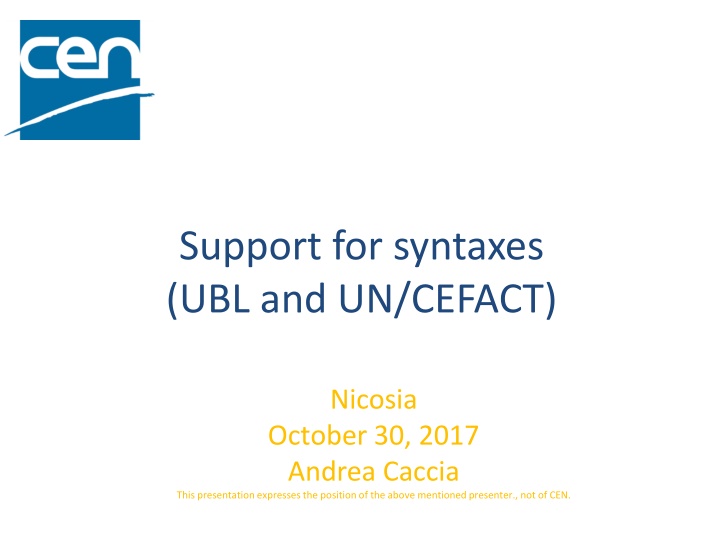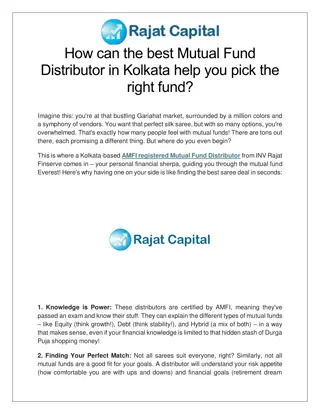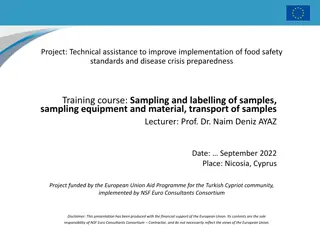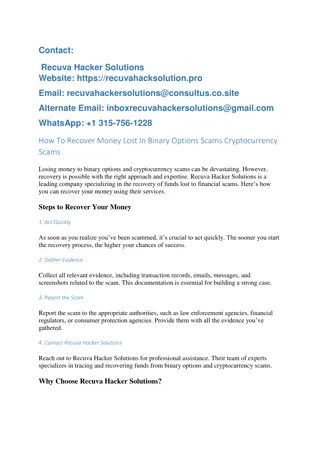
Setting Up E-Invoicing: Common Models and Definitions
Learn about setting up an e-invoicing system following Directive 2014/55/EU and common operating models such as the direct connection model and four-corner model for efficient electronic invoice exchange. Explore the benefits of structured electronic formats and bilateral agreements between trading parties. Discover the importance of standardization and interoperability in e-invoicing practices.
Download Presentation

Please find below an Image/Link to download the presentation.
The content on the website is provided AS IS for your information and personal use only. It may not be sold, licensed, or shared on other websites without obtaining consent from the author. If you encounter any issues during the download, it is possible that the publisher has removed the file from their server.
You are allowed to download the files provided on this website for personal or commercial use, subject to the condition that they are used lawfully. All files are the property of their respective owners.
The content on the website is provided AS IS for your information and personal use only. It may not be sold, licensed, or shared on other websites without obtaining consent from the author.
E N D
Presentation Transcript
Support for syntaxes (UBL and UN/CEFACT) Nicosia October 30, 2017 Andrea Caccia This presentation expresses the position of the above mentioned presenter., not of CEN.
Setting up an e-invoicing system Definition of electronic invoice from Directive 2014/55/EU: an invoice that has been issued, transmitted and received in a structured electronic format which allows for its automatic and electronic processing No image or simple PDF invoice Suppliers and buyers that use structured invoice data establish a direct two-way communication or use a service provider for e-invoice exchange inbound and outbound e-invoicing can be practiced in a centralised manner increasing transparency and allowing straight trough processing and cash management
Common operating models From TR 16931-4
Direct Connection model In a bilateral scenario trading parties are responsible for agreeing at a commercial level the basis on which they will work together and are required to agree on all levels of interoperability, business, semantic and technical details Where possible, one or other of the trading parties may work to ensure the maximum degree of standardization in their dealings with as many parties as possible Bilateral exchanges vary enormously in scale and scope from tightly integrated supply chains employing EDI, ERP to ERP direct connections, and EIPP/EBPP (Electronic Invoice or Bill Presentment and Payment) web-portals.
Four-corner model Service providers interoperate as required by their users through bilateral linkages between them or through the creation of multilateral network solutions Trading parties are connected to their own service providers or access points, which interoperate with each other: avoid the need to create multiple differing connections with all their own trading parties The PEPPOL (see http://www.peppol.eu ) e-Delivery Network in the e-Procurement domain is an implementation of the four- corner model with community based interoperability Lifecycle management and legal governance utilizes CEF e-Delivery capabilities for message exchange, dynamic discovery and look- up, PKI based trust services
Support for syntax from CEN: syntax bindings Reference Topic (not official title) EN 16931-1 European Standard for the semantic data model of the core elements of an electronic invoice i.e. the content of the invoice valid in Europe TS 16931-2 A Technical Specification giving a short list of internationally used syntaxes (UBL & CII) that comply with the EN and that public administrations shall support TS 16931-3-1 16931-3-4 A set of 4 technical specifications for syntax binding methodology and 3 syntax bindings with the EN for UBL, CII and EDIFACT TR 16931-4 Transmission guideline TR 16931-5 EN extension methodology TR 16931-6 Test results
Syntax binding: methodology Different invoice formats are supported with syntax bindings TS 16931-3-1 specifies the methodology of the mapping between: the semantic model of an electronic invoice, included in EN 16931-1 and a syntax, i.e. an invoice syntax with its own model 7
Syntax binding: methodology Specifies which element in the syntax is to be used for the information contained in each element in the semantic model, including Any sub-elements supplementary components such as Identification scheme identifiers Any mismatches between semantics, format, cardinality or structure are indicated 8
Syntax bindings Bindings to: UBL 2.1 - ISO/IEC 19845 -> TS 16931-3-2 UN/CEFACT XML Core Invoice D16B -> TS 16931-3-3 EDIFACT INVOIC D16B -> TS 16931-3-4 (not mandatory for public authorities) Two tables per binding : Core elements to syntax (normative) Syntax to core elements (reference information for implementers) Indication of mismatches Validation artefacts 9
Syntax bindings example: UBL Clause 4.3: Mapping the Invoice model 10
Syntax bindingsexample: UBL Clause 4.3: Mapping the Invoice model 11
How to support implementation? Identification and implementation of guidance and user support for agreed requirements Identification of requirements for the development of Common Extensions to meet European-level and multi- sectoral needs for such Extensions Requirements, governance of registry services to users of the EN in relation to a set of defined items where registration is agreed to be required (e.g. extensions, Core Invoice Usage Specifications, code lists, )
How to support implementation? The public sector is the biggest buyer but B2B counts for 85%: private sector requirements support is key Open source, APIs, Business use cases, ... The new CEN Digital Transformation Strategy can give answers A phase 2 for CEN/TC 434 was agreed at the last plenary in Milan, Oct 12-13 2017






















